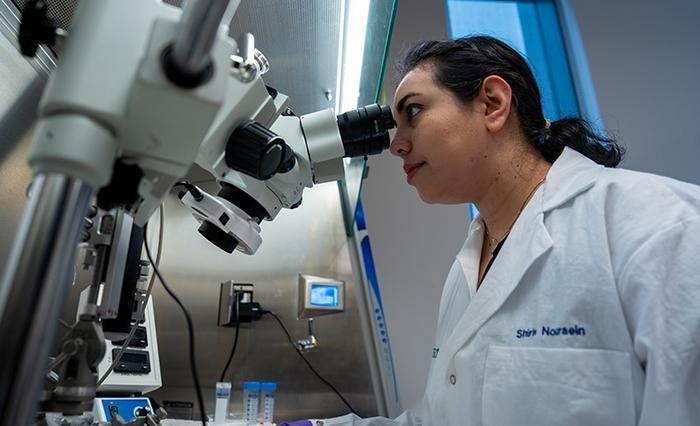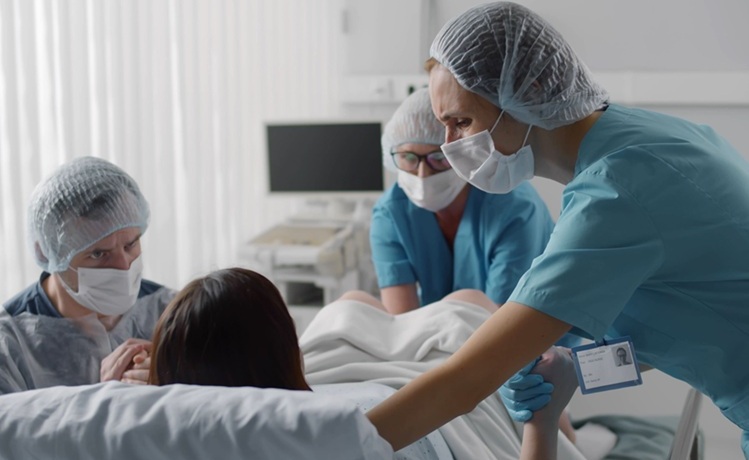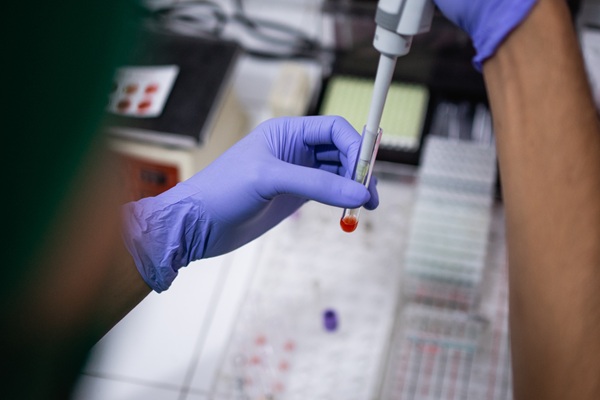Establishment of Biomarker Panel May Lead to Rapid Tests for Early Diagnosis of Pancreatic Cancer
|
By LabMedica International staff writers Posted on 10 Apr 2016 |

Image: Micrograph of pancreatic ductal adenocarcinoma (the most common type of pancreatic cancer) (Photo courtesy of Wikimedia Commons).
A panel comprising five genetic biomarkers was shown to accurately differentiate among tissues from pancreatic tumors and those taken from various non-malignant sources.
Investigators at Beth Israel Deaconess Medical Center (Boston, MA, USA) applied innovative data normalization and gene selection approaches to analyze a number of publicly available pancreatic cancer gene expression datasets. They combined the statistical power of multiple genomic studies while masking their variability and batch effects to identify robust early diagnostic biomarkers of pancreatic cancer.
The investigators established a panel comprising the genes TMPRSS4 (Transmembrane protease, serine 4), AHNAK2 (AHNAK nucleoprotein 2), POSTN (Periostin), ECT2 (Epithelial cell transforming 2), and SERPINB5 (Serpin peptidase inhibitor, clade B (ovalbumin), member 5) that achieved on average 95% sensitivity and 89% specificity in discriminating pancreatic ductal adenocarcinoma (PDAC) from non-tumor samples in four training sets and similar performance in five independent validation datasets. The five-gene classifier accurately discriminated PDAC from chronic pancreatitis, other cancers, and non-tumor samples from PDAC precursors in three independent datasets.
PDAC-specific expression of the biomarker panel was measured by qRT-PCR (qualitative real-time PCR) in microdissected patient-derived FFPE (formalin-fixed, paraffin-embedded) tissues. Cell-based assays were then used to assess the impact of two of the biomarkers, TMPRSS4 and ECT2, on PDAC cells.
Results revealed that knock-down of TMPRSS4 and ECT2 reduced PDAC soft agar growth and cell viability, and TMPRSS4 knockdown also blocked PDAC migration and invasion.
“Pancreatic cancer is a devastating disease with a death rate close to the incidence rate,” said senior author Dr. Towia Libermann, professor of medicine at Beth Israel Deaconess Medical Center. “Because more than 90% of pancreatic cancer cases are diagnosed at the metastatic stage, when there are only limited therapeutic options, earlier diagnosis is anticipated to have a major impact on extending life expectancy for patients. There has been a lack of reliable markers, early indicators, and risk factors associated with pancreatic cancer, but this new way of differentiating between healthy and malignant tissue offers hope for earlier diagnosis and treatment.”
“Because these five genes are turned on so early in the development of pancreatic cancer, they may play roles as drivers of this disease and may be exciting targets for therapies,” said Dr. Libermann. “Moving forward, we will explore the potential to convert this tissue-based diagnostic into a noninvasive blood or urine test.”
The study was published in the March 16, 2016, online edition of the journal Oncotarget.
Related Links:
Beth Israel Deaconess Medical Center
Investigators at Beth Israel Deaconess Medical Center (Boston, MA, USA) applied innovative data normalization and gene selection approaches to analyze a number of publicly available pancreatic cancer gene expression datasets. They combined the statistical power of multiple genomic studies while masking their variability and batch effects to identify robust early diagnostic biomarkers of pancreatic cancer.
The investigators established a panel comprising the genes TMPRSS4 (Transmembrane protease, serine 4), AHNAK2 (AHNAK nucleoprotein 2), POSTN (Periostin), ECT2 (Epithelial cell transforming 2), and SERPINB5 (Serpin peptidase inhibitor, clade B (ovalbumin), member 5) that achieved on average 95% sensitivity and 89% specificity in discriminating pancreatic ductal adenocarcinoma (PDAC) from non-tumor samples in four training sets and similar performance in five independent validation datasets. The five-gene classifier accurately discriminated PDAC from chronic pancreatitis, other cancers, and non-tumor samples from PDAC precursors in three independent datasets.
PDAC-specific expression of the biomarker panel was measured by qRT-PCR (qualitative real-time PCR) in microdissected patient-derived FFPE (formalin-fixed, paraffin-embedded) tissues. Cell-based assays were then used to assess the impact of two of the biomarkers, TMPRSS4 and ECT2, on PDAC cells.
Results revealed that knock-down of TMPRSS4 and ECT2 reduced PDAC soft agar growth and cell viability, and TMPRSS4 knockdown also blocked PDAC migration and invasion.
“Pancreatic cancer is a devastating disease with a death rate close to the incidence rate,” said senior author Dr. Towia Libermann, professor of medicine at Beth Israel Deaconess Medical Center. “Because more than 90% of pancreatic cancer cases are diagnosed at the metastatic stage, when there are only limited therapeutic options, earlier diagnosis is anticipated to have a major impact on extending life expectancy for patients. There has been a lack of reliable markers, early indicators, and risk factors associated with pancreatic cancer, but this new way of differentiating between healthy and malignant tissue offers hope for earlier diagnosis and treatment.”
“Because these five genes are turned on so early in the development of pancreatic cancer, they may play roles as drivers of this disease and may be exciting targets for therapies,” said Dr. Libermann. “Moving forward, we will explore the potential to convert this tissue-based diagnostic into a noninvasive blood or urine test.”
The study was published in the March 16, 2016, online edition of the journal Oncotarget.
Related Links:
Beth Israel Deaconess Medical Center
Latest Pathology News
- AI Tool Outperforms Doctors in Spotting Blood Cell Abnormalities
- AI Tool Rapidly Analyzes Complex Cancer Images for Personalized Treatment
- Diagnostic Technology Performs Rapid Biofluid Analysis Using Single Droplet
- Novel Technology Tracks Hidden Cancer Cells Faster
- AI Tool Improves Breast Cancer Detection
- AI Tool Predicts Treatment Success in Rectal Cancer Patients
- Blood Test and Sputum Analysis Predict Acute COPD Exacerbation
- AI Tool to Transform Skin Cancer Detection with Near-Perfect Accuracy
- Unique Immune Signatures Distinguish Rare Autoimmune Condition from Multiple Sclerosis
- Simple Optical Microscopy Method Reveals Hidden Structures in Remarkable Detail
- Hydrogel-Based Technology Isolates Extracellular Vesicles for Early Disease Diagnosis
- AI Tool Improves Accuracy of Skin Cancer Detection
- Highly Sensitive Imaging Technique Detects Myelin Damage
- 3D Genome Mapping Tool to Improve Diagnosis and Treatment of Genetic Diseases
- New Molecular Analysis Tool to Improve Disease Diagnosis
- Tears Offer Noninvasive Alternative for Diagnosing Neurodegenerative Diseases
Channels
Clinical Chemistry
view channel
Chemical Imaging Probe Could Track and Treat Prostate Cancer
Prostate cancer remains a leading cause of illness and death among men, with many patients eventually developing resistance to standard hormone-blocking therapies. These drugs often lose effectiveness... Read more
Mismatch Between Two Common Kidney Function Tests Indicates Serious Health Problems
Creatinine has long been the standard for measuring kidney filtration, while cystatin C — a protein produced by all human cells — has been recommended as a complementary marker because it is influenced... Read moreMolecular Diagnostics
view channel
Four-Gene Blood Test Rules Out Bacterial Lung Infection
Lower respiratory tract infections (LRTIs) are among the most common reasons for antibiotic prescriptions, yet distinguishing bacterial infections from viral ones remains notoriously difficult.... Read more
New PCR Test Improves Diagnostic Accuracy of Bacterial Vaginosis and Candida Vaginitis
Bacterial vaginosis (BV) impacts approximately 25% of women of reproductive age, while up to 75% of women experience candida vaginitis (CV) at least once in their lifetime. Vaginal symptoms are one of... Read moreHematology
view channel
Platelet Activity Blood Test in Middle Age Could Identify Early Alzheimer’s Risk
Early detection of Alzheimer’s disease remains one of the biggest unmet needs in neurology, particularly because the biological changes underlying the disorder begin decades before memory symptoms appear.... Read more
Microvesicles Measurement Could Detect Vascular Injury in Sickle Cell Disease Patients
Assessing disease severity in sickle cell disease (SCD) remains challenging, especially when trying to predict hemolysis, vascular injury, and risk of complications such as vaso-occlusive crises.... Read more
ADLM’s New Coagulation Testing Guidance to Improve Care for Patients on Blood Thinners
Direct oral anticoagulants (DOACs) are one of the most common types of blood thinners. Patients take them to prevent a host of complications that could arise from blood clotting, including stroke, deep... Read moreImmunology
view channel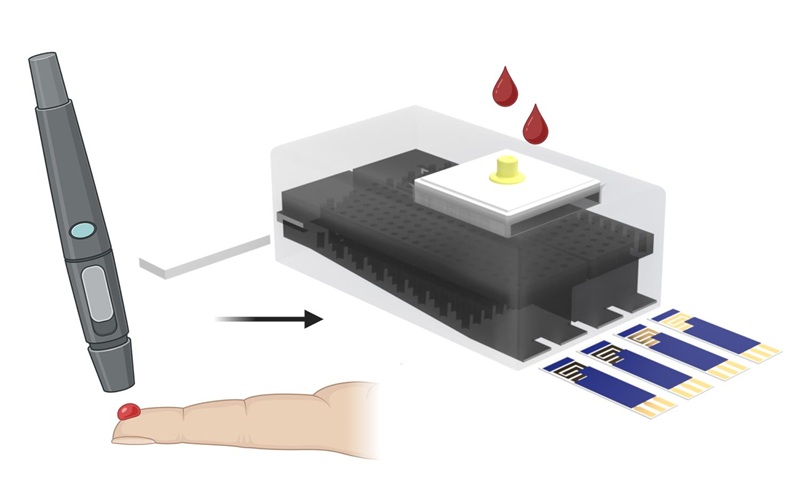
New Test Distinguishes Vaccine-Induced False Positives from Active HIV Infection
Since HIV was identified in 1983, more than 91 million people have contracted the virus, and over 44 million have died from related causes. Today, nearly 40 million individuals worldwide live with HIV-1,... Read more
Gene Signature Test Predicts Response to Key Breast Cancer Treatment
DK4/6 inhibitors paired with hormone therapy have become a cornerstone treatment for advanced HR+/HER2– breast cancer, slowing tumor growth by blocking key proteins that drive cell division.... Read more
Chip Captures Cancer Cells from Blood to Help Select Right Breast Cancer Treatment
Ductal carcinoma in situ (DCIS) accounts for about a quarter of all breast cancer cases and generally carries a good prognosis. This non-invasive form of the disease may or may not become life-threatening.... Read moreMicrobiology
view channelRapid POC Tuberculosis Test Provides Results Within 15 Minutes
Tuberculosis remains one of the world’s deadliest infectious diseases, and reducing new cases depends on identifying individuals with latent infection before it progresses. Current diagnostic tools often... Read more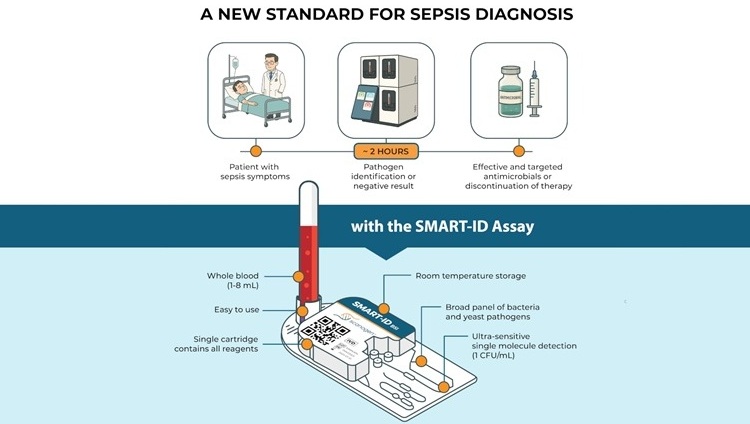
Rapid Assay Identifies Bloodstream Infection Pathogens Directly from Patient Samples
Bloodstream infections in sepsis progress quickly and demand rapid, precise diagnosis. Current blood-culture methods often take one to five days to identify the pathogen, leaving clinicians to treat blindly... Read moreTechnology
view channel
AI Saliva Sensor Enables Early Detection of Head and Neck Cancer
Early detection of head and neck cancer remains difficult because the disease produces few or no symptoms in its earliest stages, and lesions often lie deep within the head or neck, where biopsy or endoscopy... Read more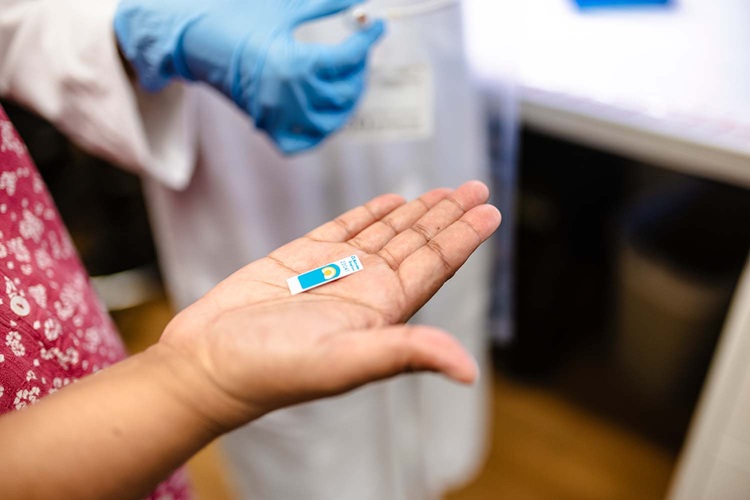
AI-Powered Biosensor Technology to Enable Breath Test for Lung Cancer Detection
Detecting lung cancer early remains one of the biggest challenges in oncology, largely because current tools are invasive, expensive, or unable to identify the disease in its earliest phases.... Read moreIndustry
view channel
Abbott Acquires Cancer-Screening Company Exact Sciences
Abbott (Abbott Park, IL, USA) has entered into a definitive agreement to acquire Exact Sciences (Madison, WI, USA), enabling it to enter and lead in fast-growing cancer diagnostics segments.... Read more







 Analyzer.jpg)





